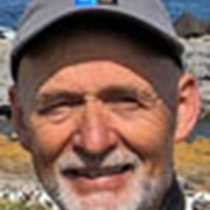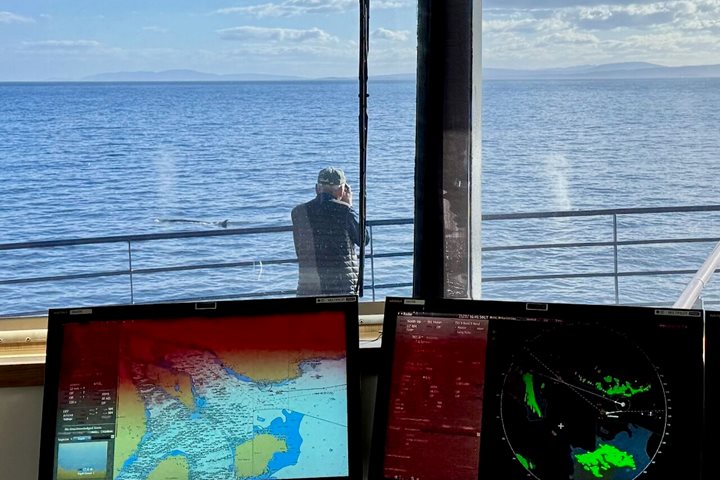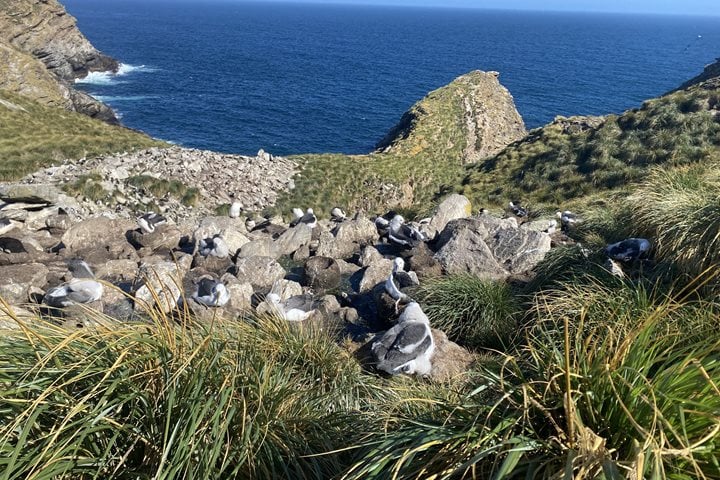This morning the National Geographic Explorer anchored at Saunder’s Island, and we were eager to make our first landing of this voyage. Saunder’s Island, just off the north coast of West Falkland, is the fourth largest island in the Falklands and is run as a cattle and sheep farm by Dave and Suzan Evans. The island got its name after the 18th century British Admiral Sir Charles Saunders.
The Falkland Islands are typical of the sub-Antarctic islands with a flora and fauna distinctly separate from those of the Antarctic. Saunder’s Island has exceptional wildlife and is internationally recognized as an important bird area. The island contains nesting sites for a number of bird species, including one of the most accessible colonies of black-browed albatross in the Falkland Islands. This albatross is a magnificent bird with a wingspan of eight feet. These birds are known to return to the same nest in the same colony and mate for life. A single large egg is laid in early October and then incubated up to 72 days. It takes about 17 weeks for the chick to fledge, so these chicks have only a few more weeks before they take flight for the first time. This bird may live up to 30 years. The Falkland Islands make up the majority (70%) of the world’s population of black-browed albatross.
The morning was spent ashore. Most of the guests chose to walk about a mile to see the albatross colony. Others appreciated a ride to the colony in sturdy Land Rovers. Hardly any part of the route to the bird colony meets the characteristics of a road, but these vehicles had no problem crossing the demanding terrain. The albatross colony is spread out across a long bluff, overlooking rich kelp forests and waves that pound the rocky shore below. We saw a great number of individual downy chicks sitting on bowl-like nests of soil, grass, and roots on the terraced cliffs. During the hike we passed many Magellanic penguins standing by their burrows. Many of the guests also spotted a number of terrestrial birds, including turkey vultures, upland and kelp geese, tussac birds, Falkland thrushes, dark-faced ground tyrants, and the lovely long-tailed meadowlark.
In the afternoon we visited the historic ruins at Port Egmont, the first British settlement in the Falklands, which was established in 1765. Unbeknown to the settlers, at the same time there was a French settlement at a place named Port Louis on East Falkland. The wind got quite intense, but as usual, the Zodiac drivers and shore team handled the situation with ease. In the evening we all gathered in the lounge for Captain Oliver Krüss’s welcome cocktail party. His delightful introduction to the core officers and life aboard the expedition ship was presented with great wit, and was met with resounding laughs from everyone.
What a great first day of exploration!







